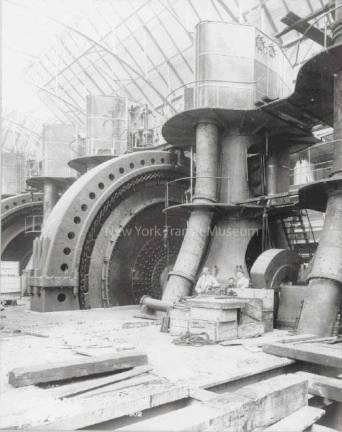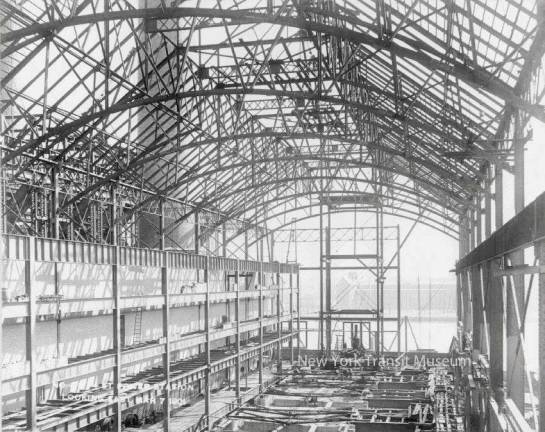Transforming Manhattan, from the East Side


We've all seen the sooty pictures of 19th century Manhattan.
Much of that smog came from the elevated trains that dotted the city -- steam-powered monoliths that churned out smoke, cinders and soot.
That era ended in 1902, with the opening of the 74th Street Powerhouse, a critical step in helping the city transition from steam locomotives to cleaner electric trains.
The story of the powerhouse, still in operation at 74th and the East River as a power generator for ConEd, is told through 31 photographs as part of the New York Transit Museum's newest exhibition, "Anatomy of a Powerhouse: Electrifying the El."
Construction on the powerhouse started in 1900 and by 1902, the power plant was operating as the largest alternating current (AC) power station the world had ever seen. By June 25, 1903, all of Manhattan's elevated lines had been electrified. Over 6,000 tons of steel and iron were used to construct the skeletal frame for the building, and inside, massive machinery lined the floor from wall to wall in a space that extended 100 feet longer than a football field.
The photographs reveal the staggering scale of the powerhouse, offering a rare glimpse into early transit history in New York and the immense power required to move Manhattan's entire elevated railway system.
The photos are on view through October at the museum, at the corner of Boerum Place and Schemerhorn Street in downtown Brooklyn. 1-718-694-1600.